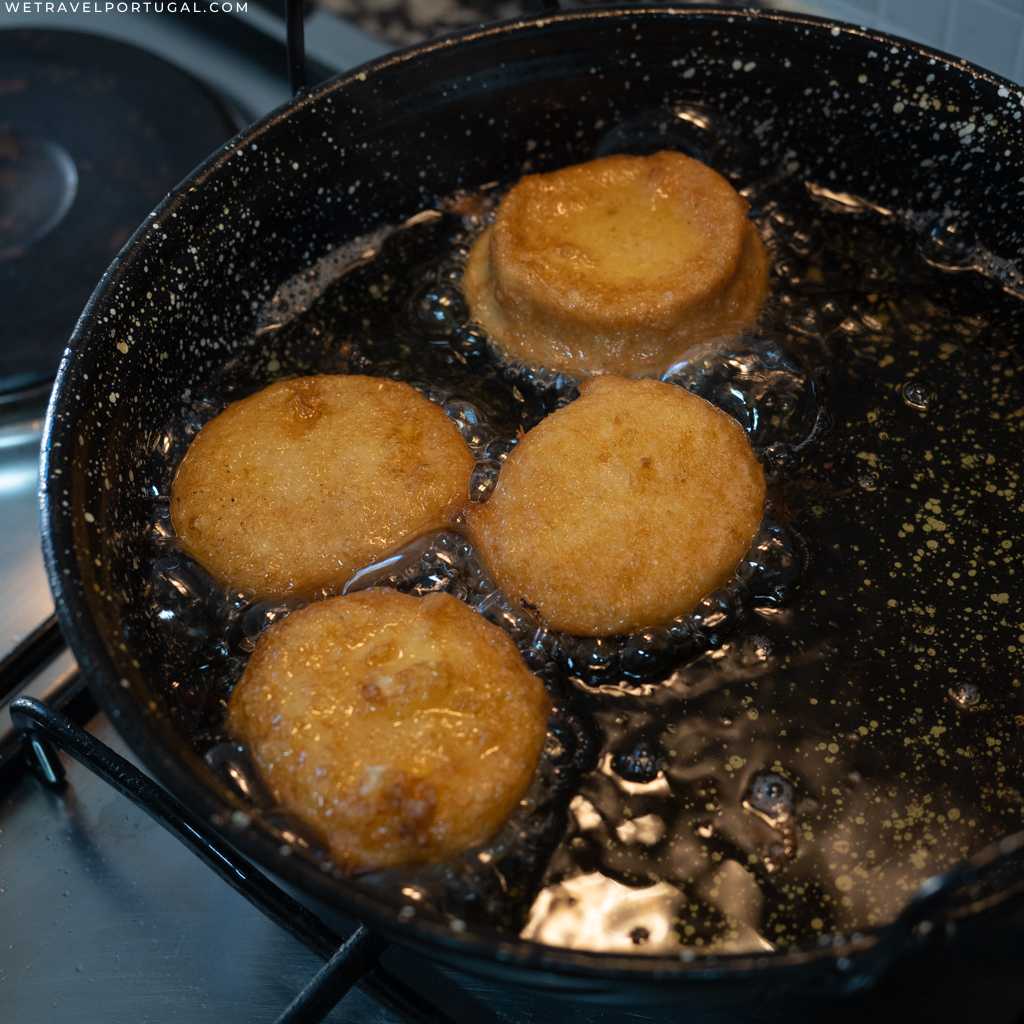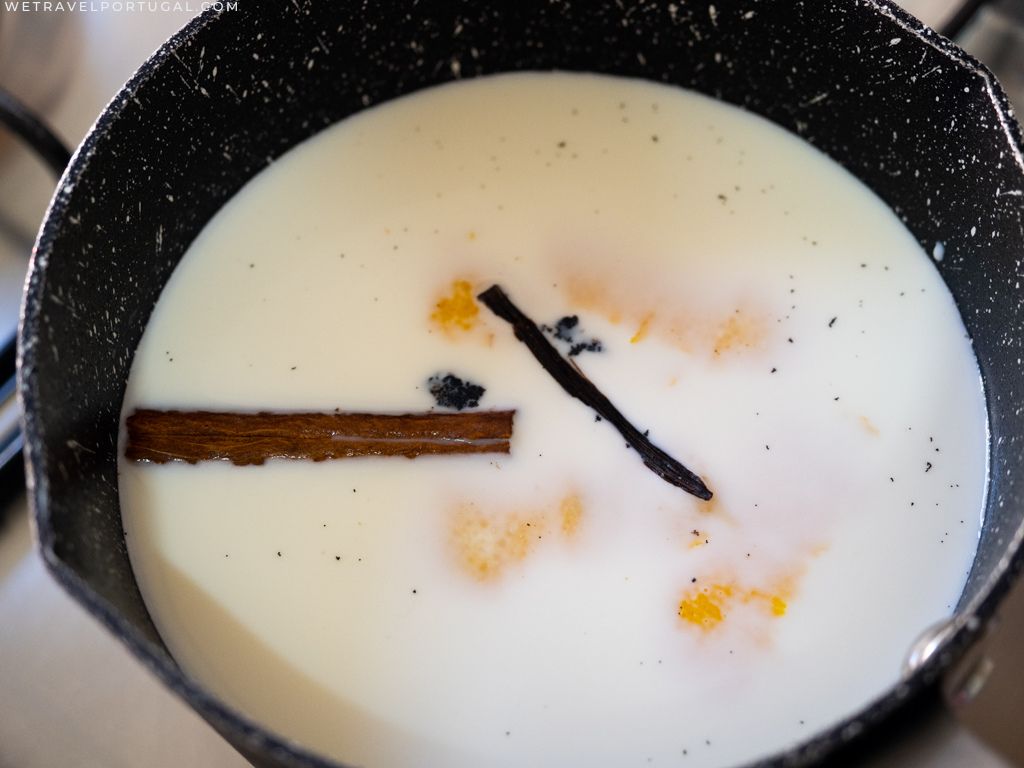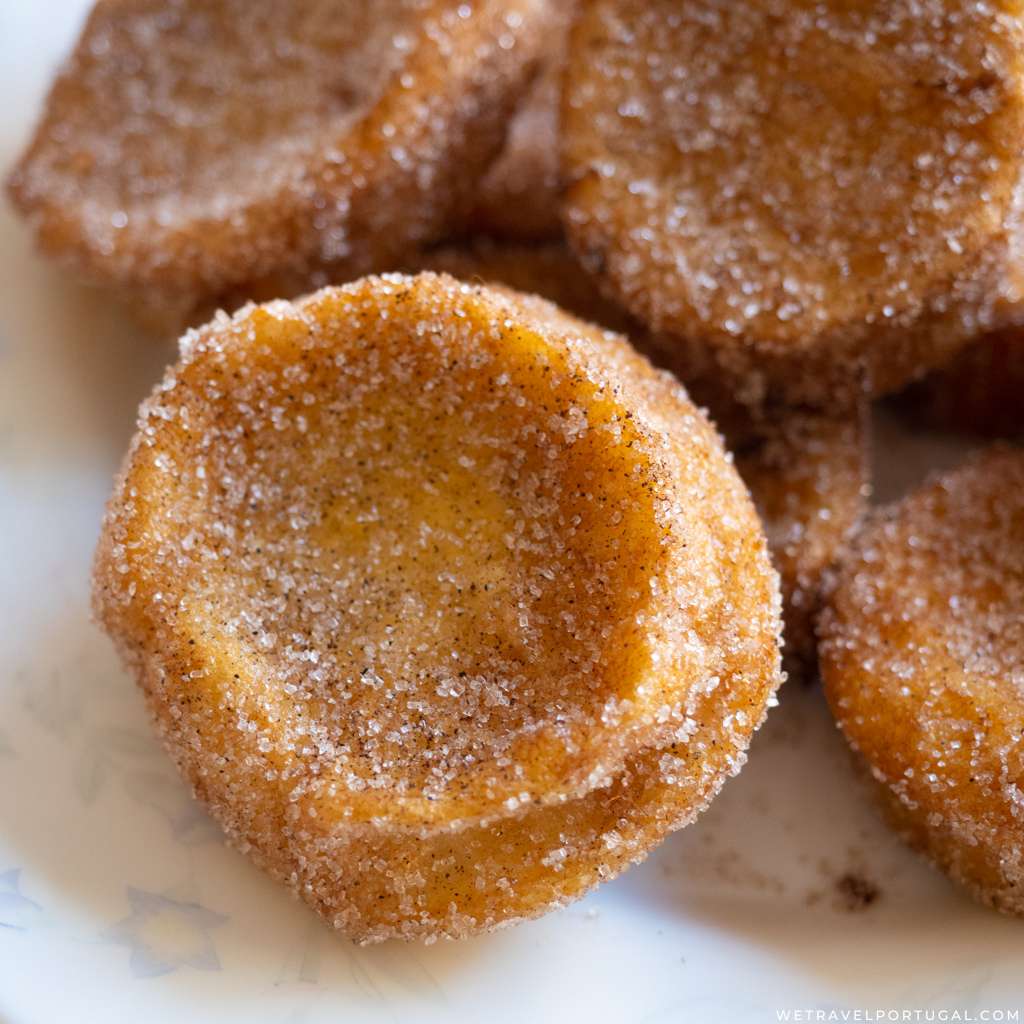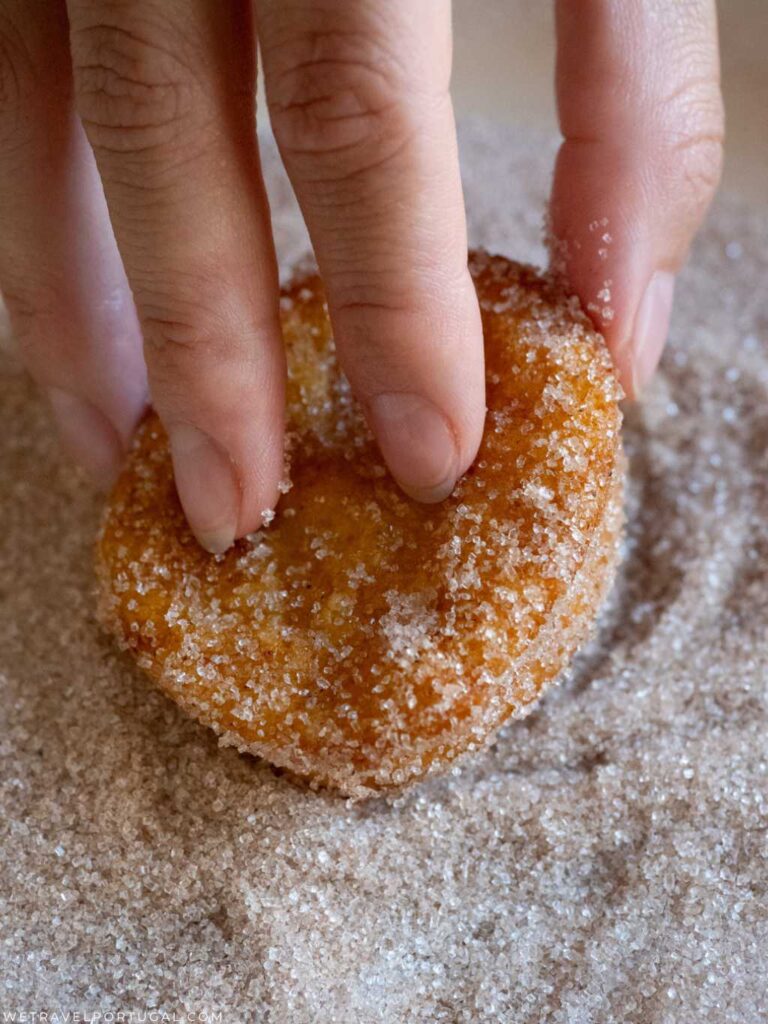Rabanadas or Fatias Douradas are a classic Portuguese dessert that’s very popular around the festive season. Like a traditional French Toast or Eggy Bread, fatias douradas are made of a day-old bread that’s soaked with a mixture of milk, sugar, a mix of spices and citrus peel, then fried and coated in more sugar and cinnamon.
The Portuguese variety involves deep-frying the bread instead of simply pan-frying it. Resulting in an indulgent eggy bread that’s crispy on the outside but very moist on the inside and has the classic golden colour of the Portuguese pastries. Hence the name fatias douradas, which simply translates as ‘golden slices’.

About Our Rabanadas Recipe
You might be wondering what’s Portuguese about French toast, and the answer is, not only the cooking technique is different, but also the type of bread used. While French Toast calls for brioche or other sandwich bread, fatias douradas are made with a Portuguese bread called cacete, which has a light crust, and a closed crumb that’s perfect for retaining the liquid batter.
The Portuguese twist is also in simmering the milk with the spices and citrus peel as to extract the maximum amount of flavour. The eggs, instead of incorporated in the batter, are whisked in a separate bowl. The whisked eggs are used as a final coat before the bread enters the hot oil. Yes, Portuguese rabanadas are deep fried in hot oil, which traps all that delicious infused milk inside. When you eat rabanadas you almost forget it’s made with bread, as it feels like you are eating a pastry such as a donut or churro.

What Bread to Use for Rabanadas?
For this recipe we used cacetinho, a mini version of cacete, which is available in basically all supermarkets and bakeries across the country. The result is smaller rabanadas that are perfect for those who just want a little sweet treat after a big meal.
During the festive season in Portugal, you will find rabanada bread available in most supermarket chains. They resemble a big baguette and are labelled as cacete rabanada. The mini version of this bread is available year-round. If you don’t have access to Portuguese bread, you can use any soft bread roll or even pre-sliced sandwich bread.
This is another simple Portuguese recipe yet packed with flavour. It’s a great way to repurpose stale bread, and also good for those with limited time, as it comes together in less than 30 minutes!

How to Make Portuguese Rabanadas

Have you tried this recipe? Let us know in the comments!


